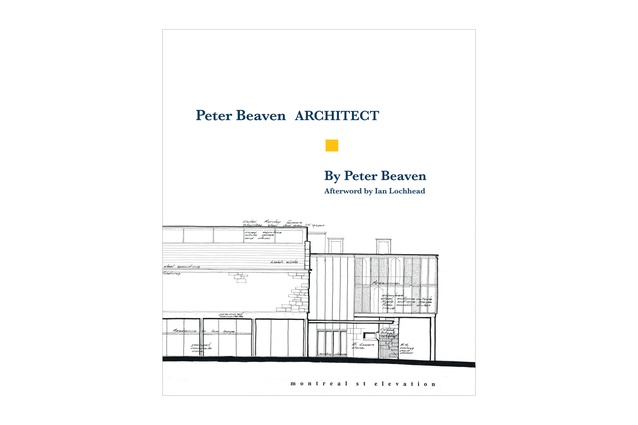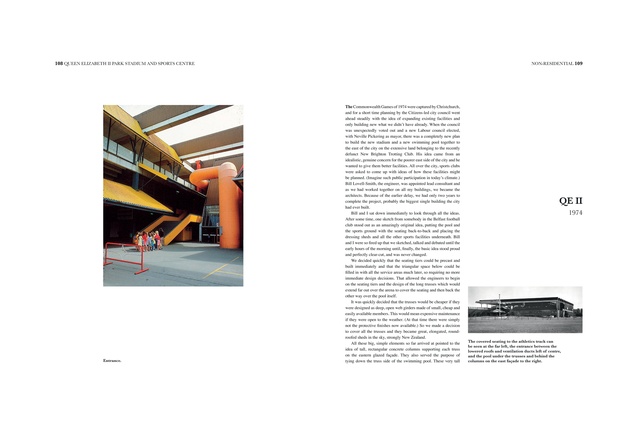Book review: Peter Beaven ARCHITECT
Aaaah, what a breath of fresh air Peter Beaven ARCHITECT is! A finely-weighted balance between the ‘voice’ of Peter and his work, and very carefully considered commentaries by Ian Lochhead and Lesley Beaven. Both add just enough commentary that the book becomes a rich combination of personal insight and objective overview of this extraordinary personality and his career.
We should be extremely grateful for the endeavours of Lochhead, and particularly Lesley Beaven, in getting this project launched, gathering together the drawings and photographs, editing the text and seeing through the volume’s publication.
The text is wonderfully personal and reads as though Peter were present speaking, or rather declaiming, as he always did. The text records those perfectly-constructed missives that he delivered, always with a touch of impatience, as if the sense of what he was saying was self-evident.
We are offered a clear explanation of the projects, blessedly free of obtuse cant, and warm humane personal detail about clients or builders. Invariably, too, there is a commentary, an aside, concerning the way of things now; the too-intrusive bureaucracy, the stultifying rules and legislation, and the loss of a simpler and more direct way of agreeing and making places.
If the project descriptions seem gentle, perhaps not unexpected in a self-penned rumination on one’s career, his comments on the deleterious effects of modernism on New Zealand architecture since the Second World War are more pointed. Returning from service in the Navy, during which he visited a number of harbour cities, he found the Auckland School of Architecture in thrall of modernism and offering him slim pickings.
Lesley Beaven quotes Peter saying of his work that “it’s just scale, proportion and unity”, and in these three descriptors we see the importance of historical continuity that Peter champions in which “…traditions of site usage are simply continued, and traditional materials rethought or adapted as needed, but always building on a continuous history”.
The structure of the book provides a narrative that is at once a biography and a rough taxonomy of typologies ranging from one-off bespoke houses, larger multiple-housing developments, commercial and institutional projects, and urban design work.
Much of this work was undertaken at a time during which a number of Christchurch architects were making strong work in the city and it is tempting to see this as evidence of a ‘school’ of like-minded practitioners; however, Beaven stands apart for his clearly-articulated belief in the importance of historical precedent, albeit with a lively overlay of personal invention.
It is this belief in the continual relevance of historical models, the critical value of streetscapes in the public realm, and the contribution that individual buildings play in creating that realm which drove much of Beaven’s work. His commitment to the quality of both building and place lead him to energetically champion ‘individual’ buildings, especially those of the beloved Mountfort and unique places, such as the Akaroa village.
His own contributions to Christchurch’s urban streetscapes include the highly acclaimed but now lost Manchester Unity and Canterbury Building Society towers, and the surviving medium-density housing at Shrewsbury Street, Edward Fitzgerald Square, the St Mary’s housing and the extraordinary Merivale Mews.
There is so much work that it is, by necessity, covered too briefly; yet it will whet the appetite of all but the most callous of modernists. The lack of current photographs of so many of the projects is mute testimony to the devastations Christchurch has suffered and lends the book a quality of the subject being at some remove from our current milieu.
I think this fits well with Beaven’s lamentation that too many of us have ignored the imperative of a historical continuum to our cost. You should buy this book and discover the wonderful character, authority and humanity of Peter Beaven and his work.
Available via mail order at peterbeavenarchitect.nz. A longer review has been published in The Block (NZIA Auckland Branch).
For an interview with Peter Beaven from 2011, see here.











